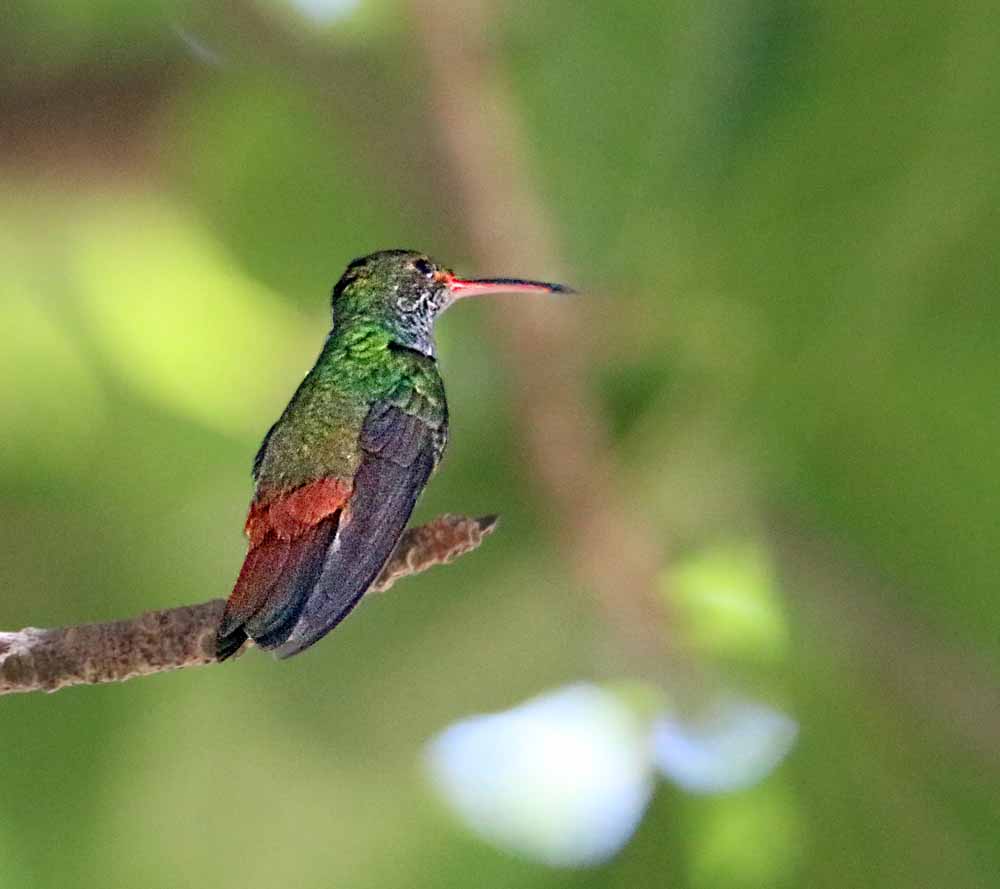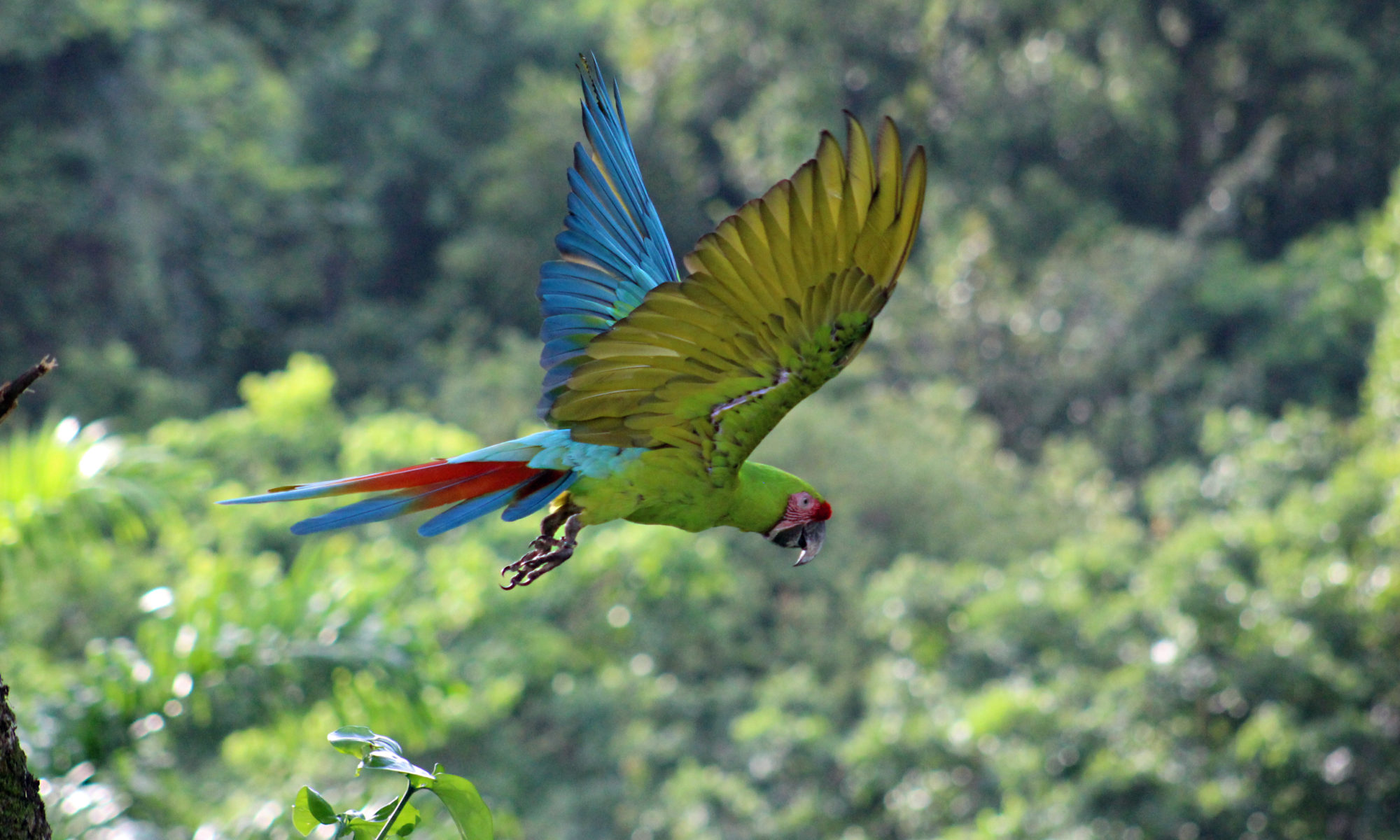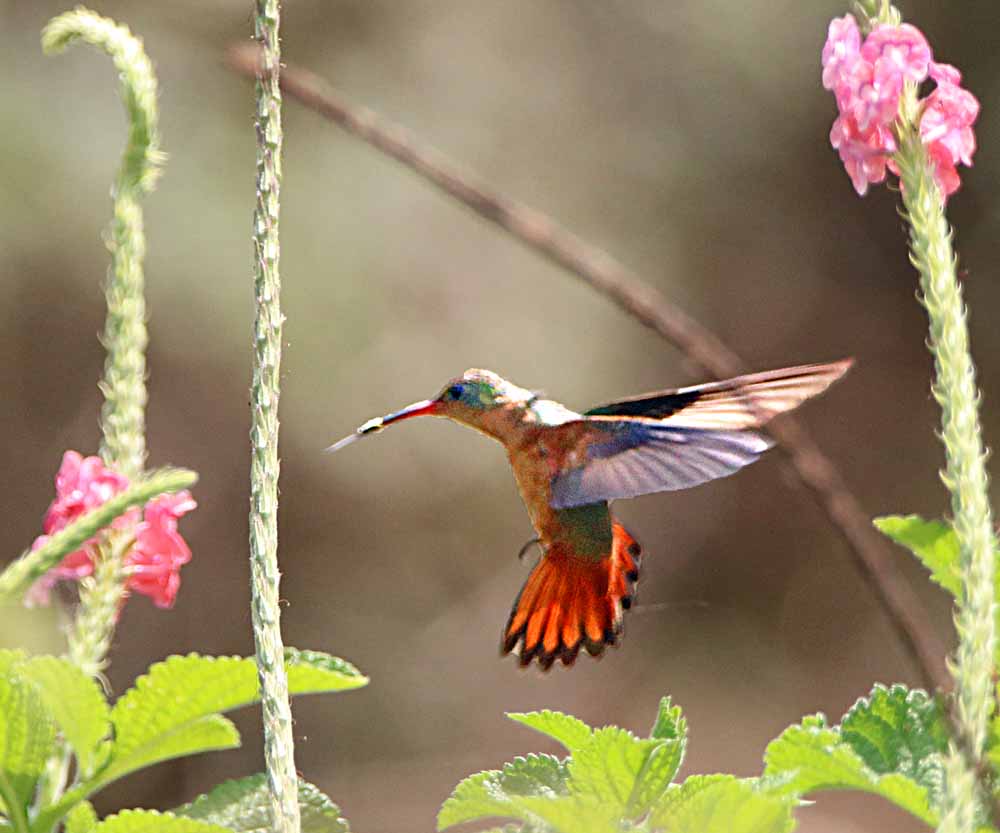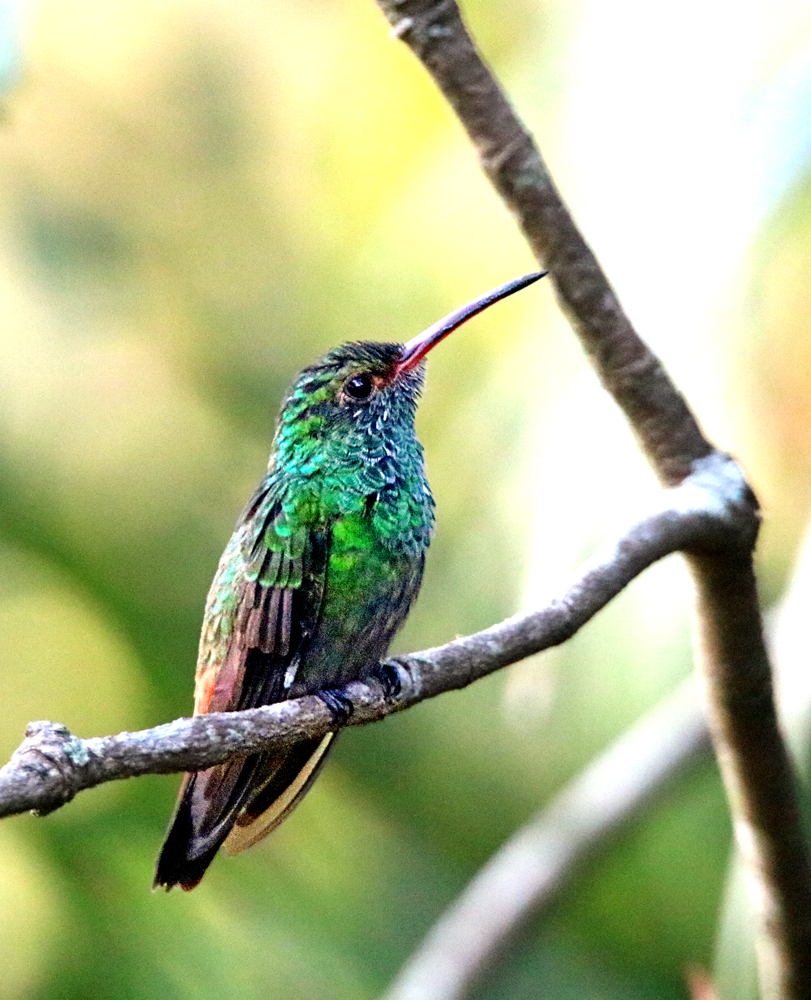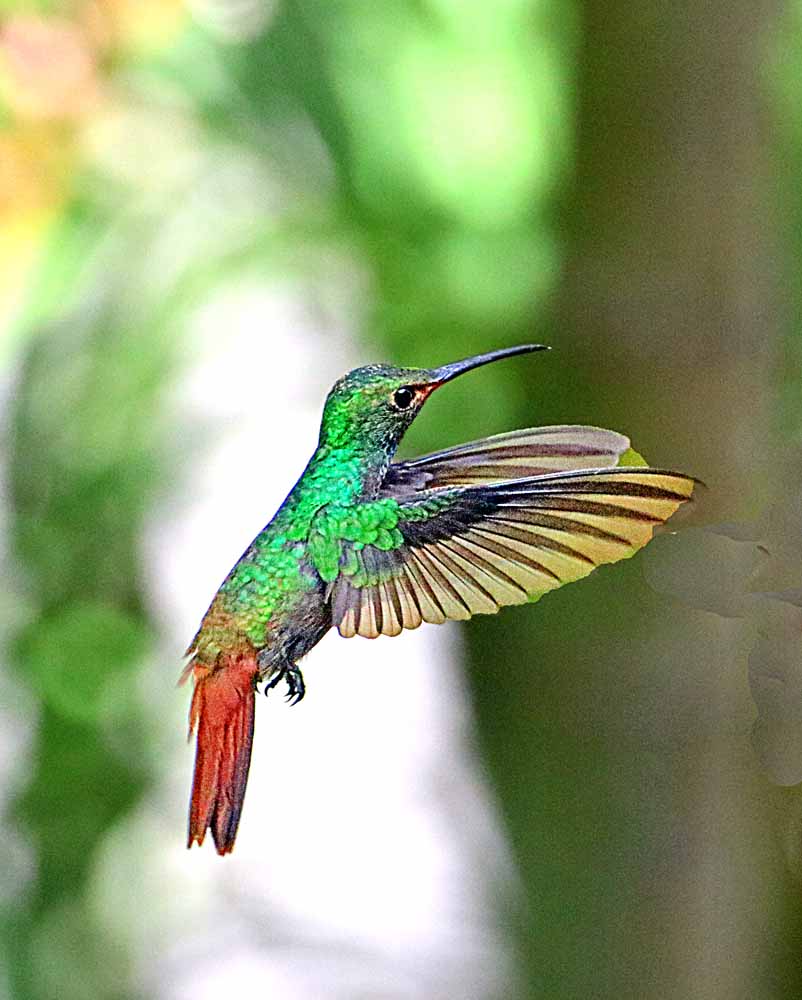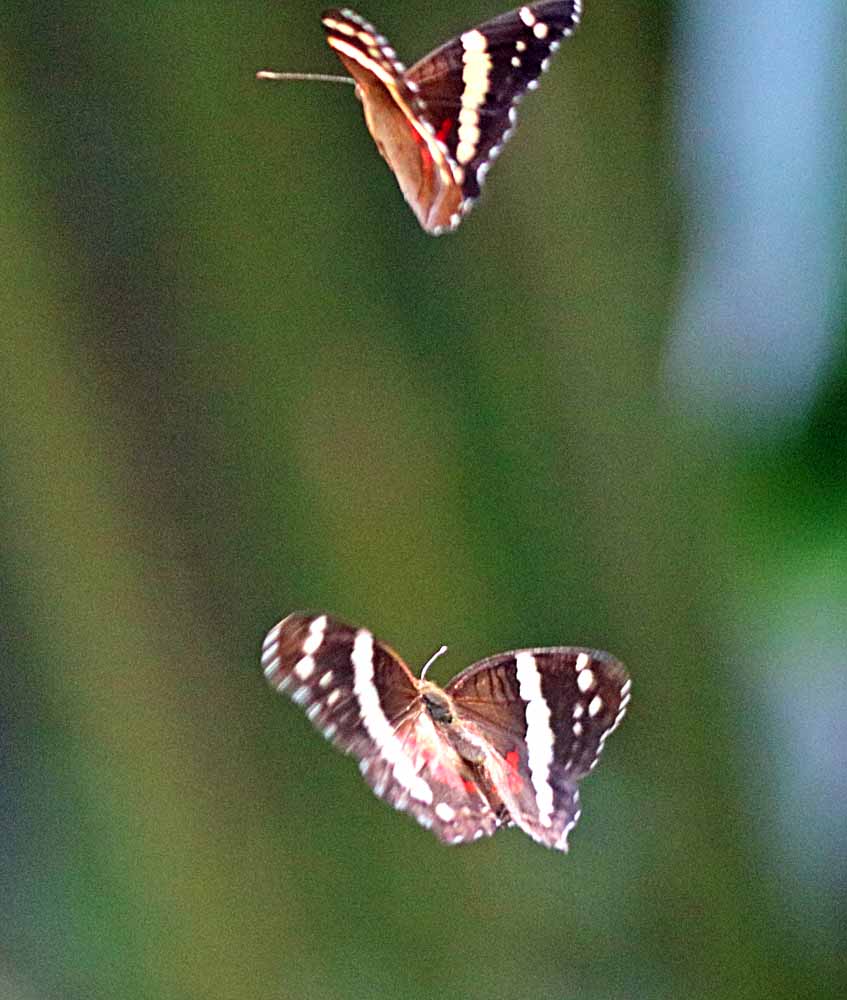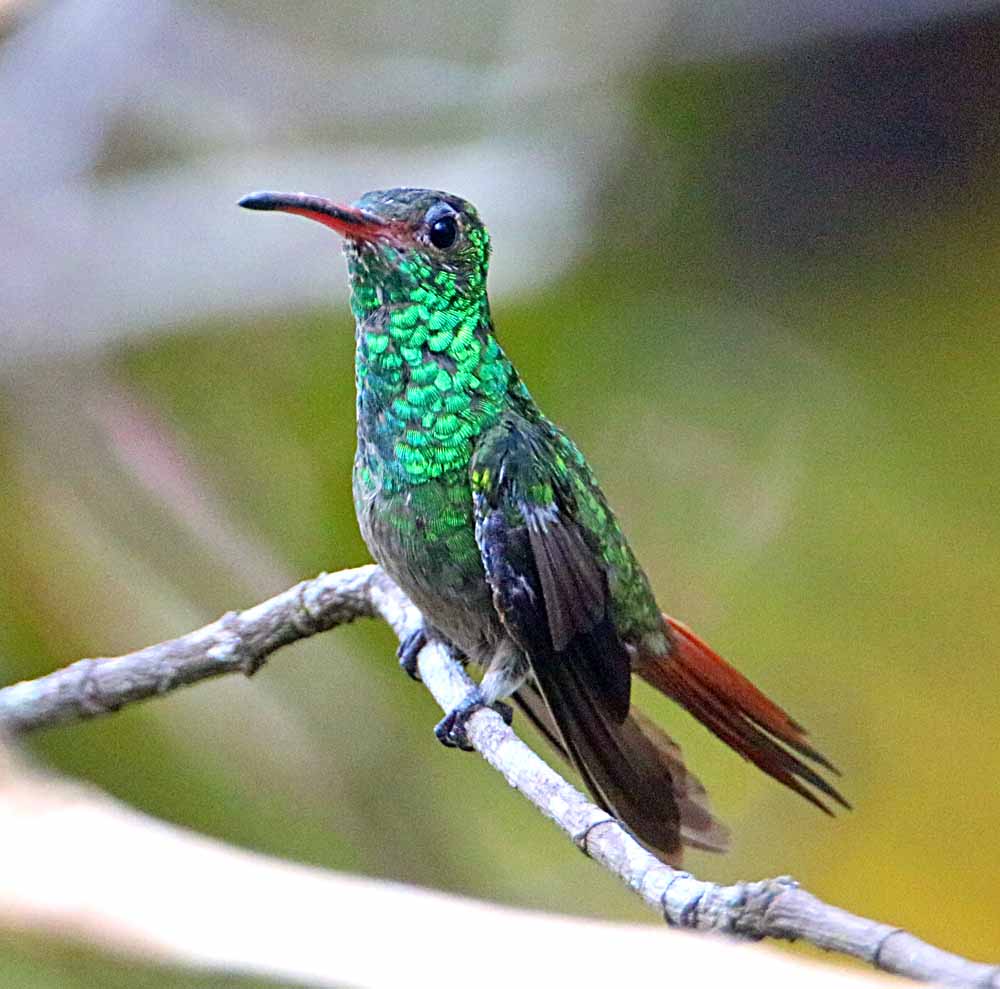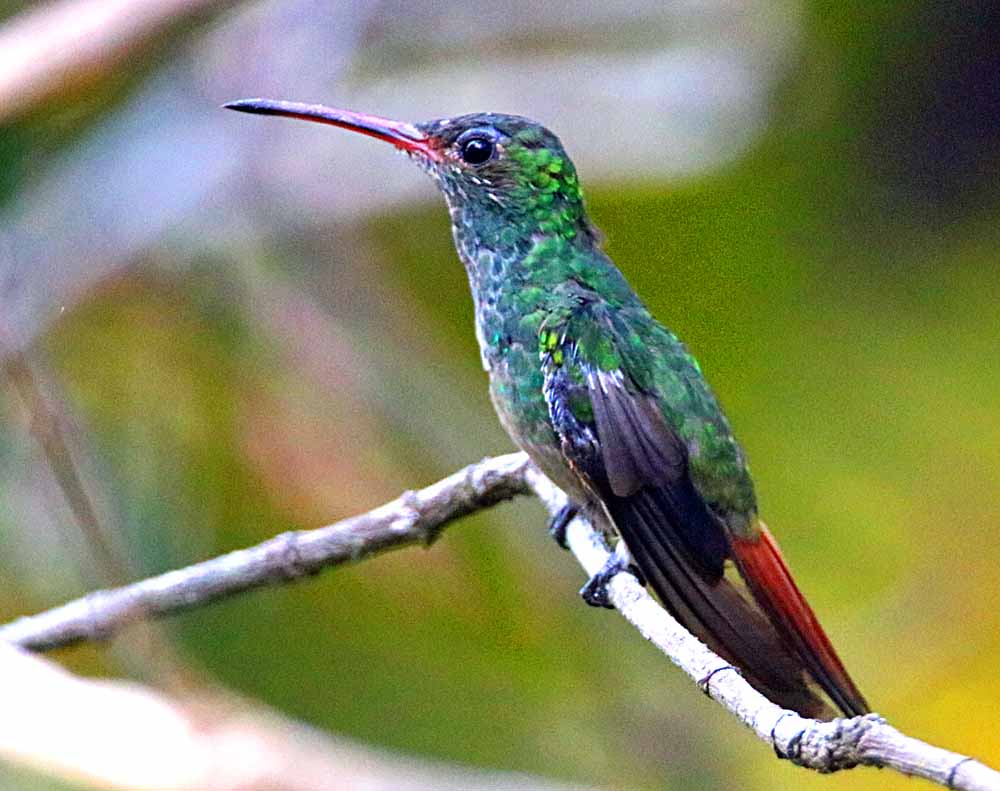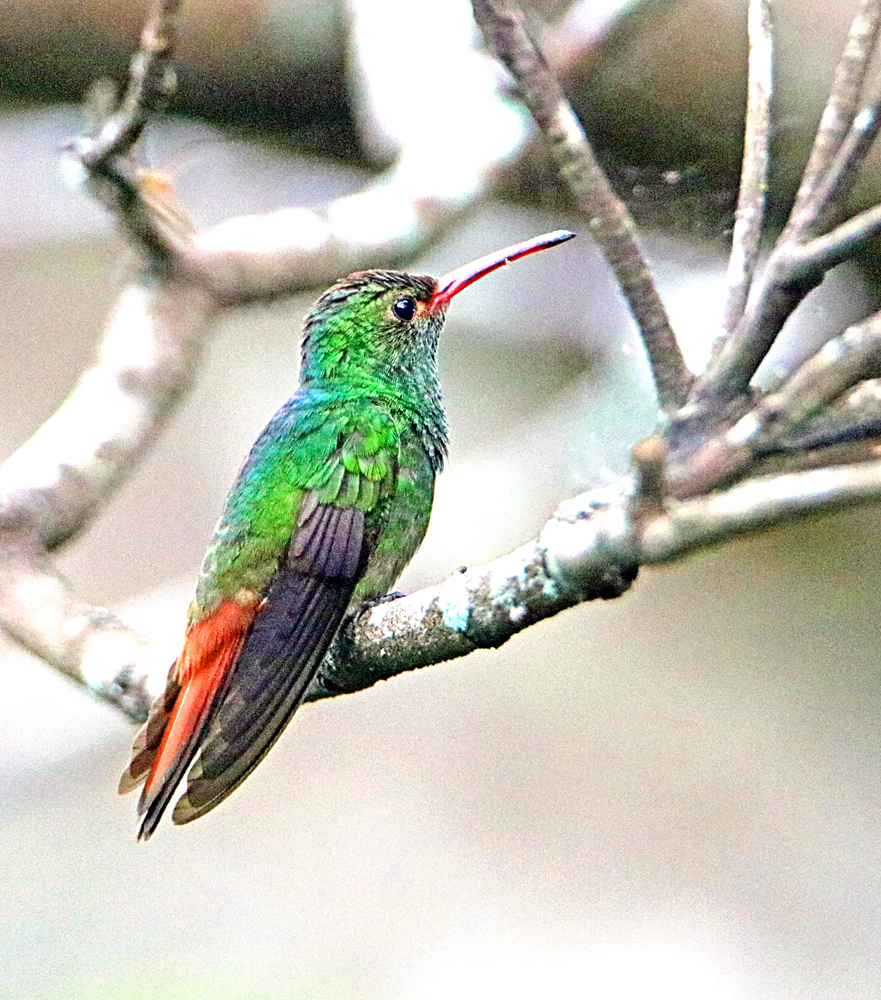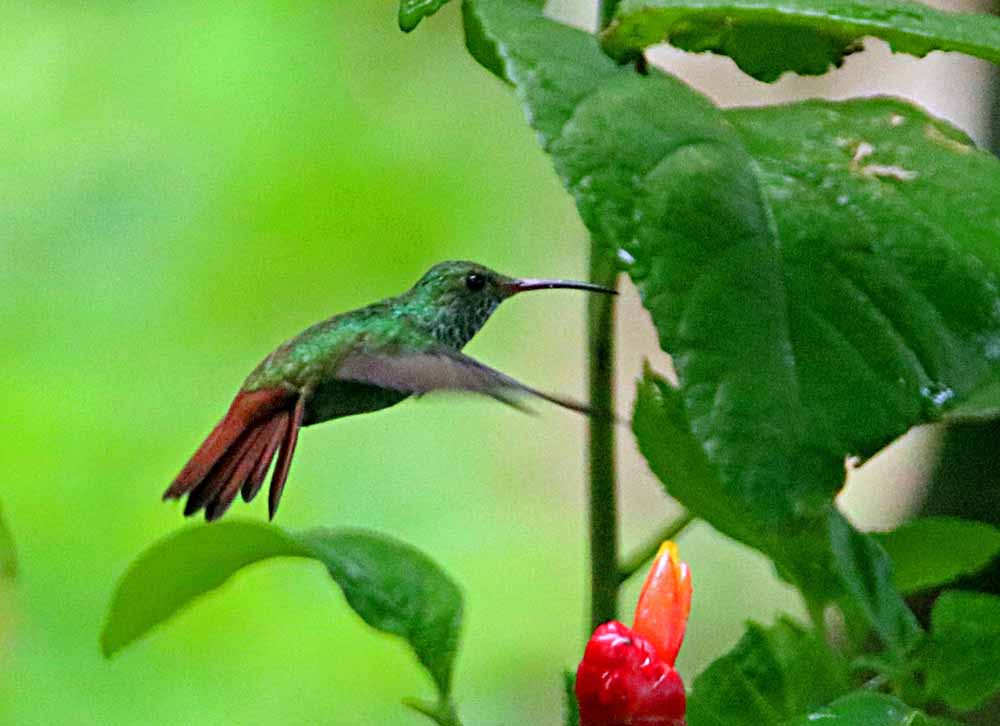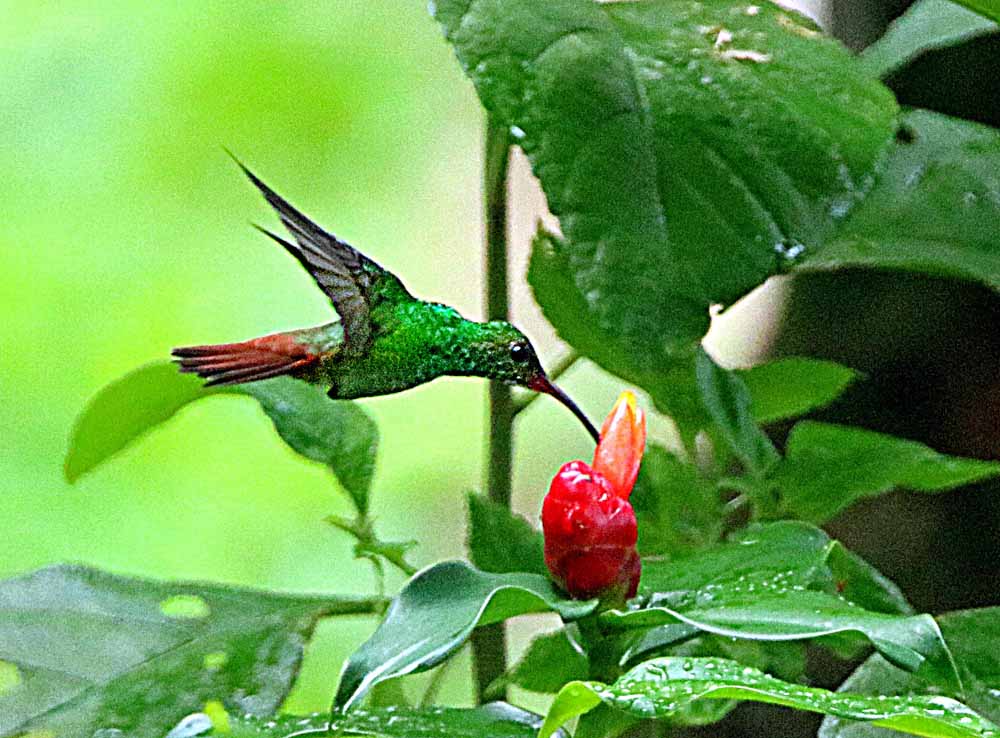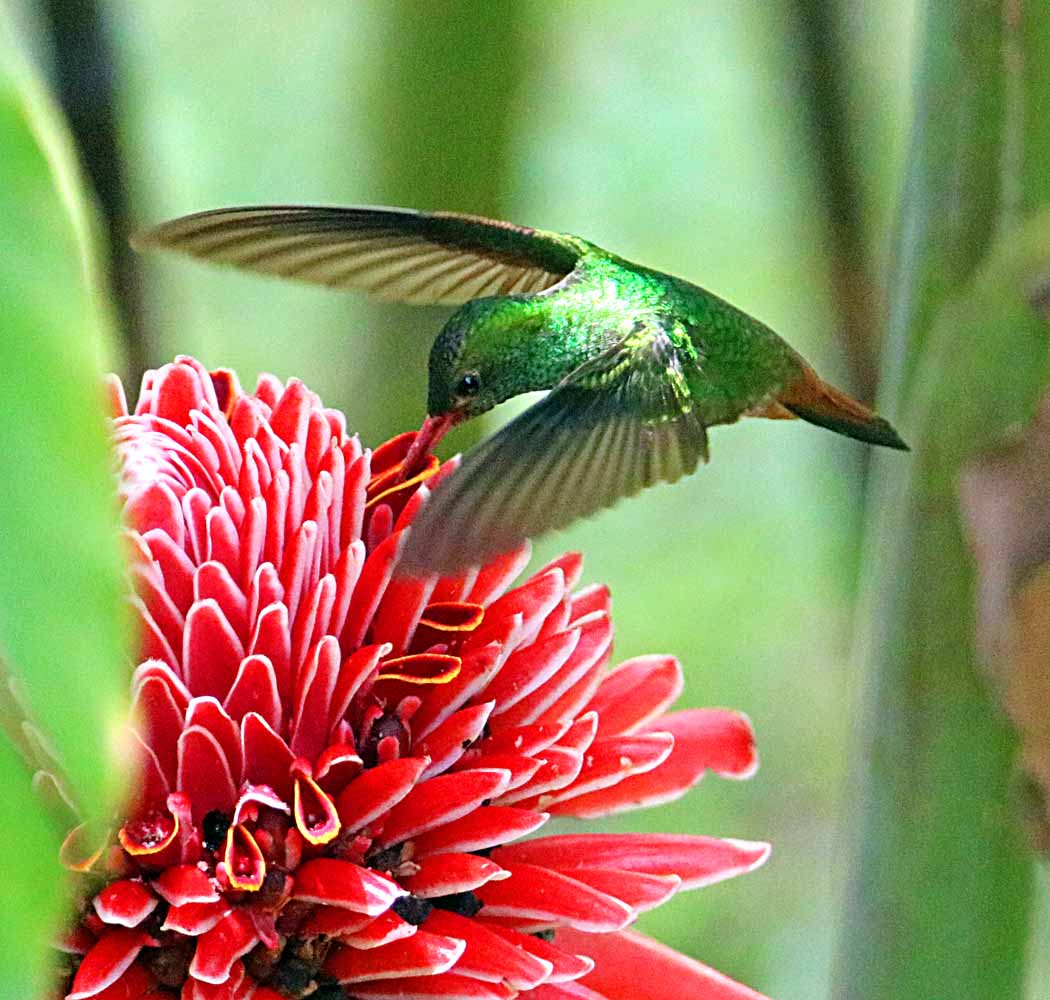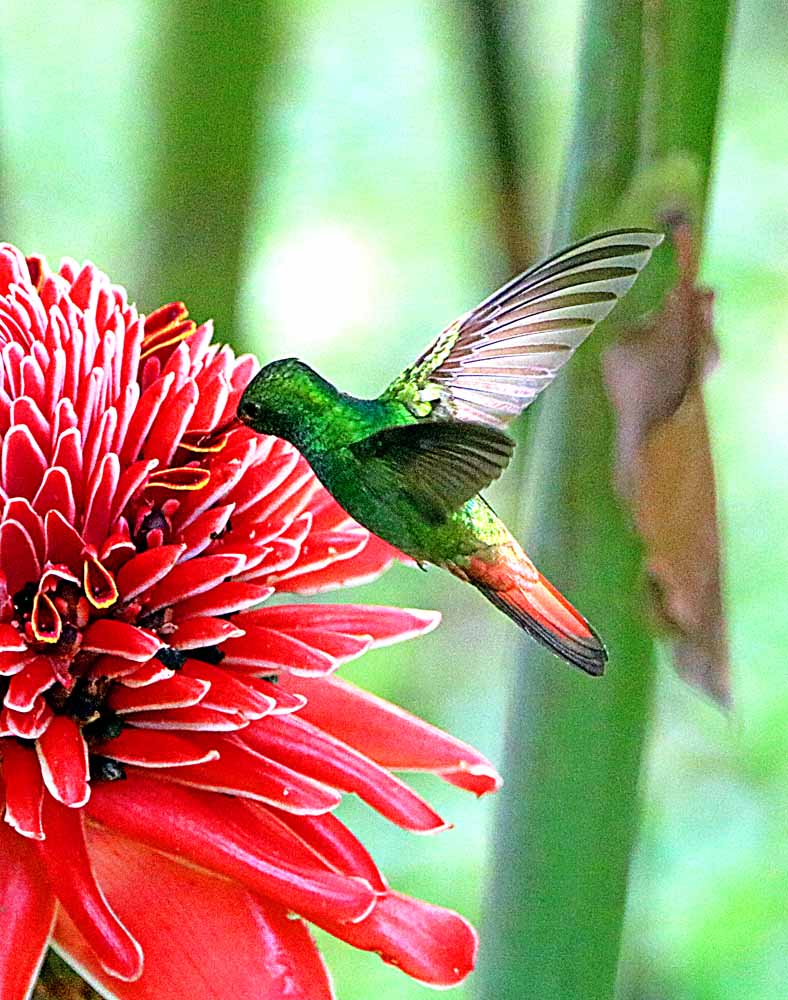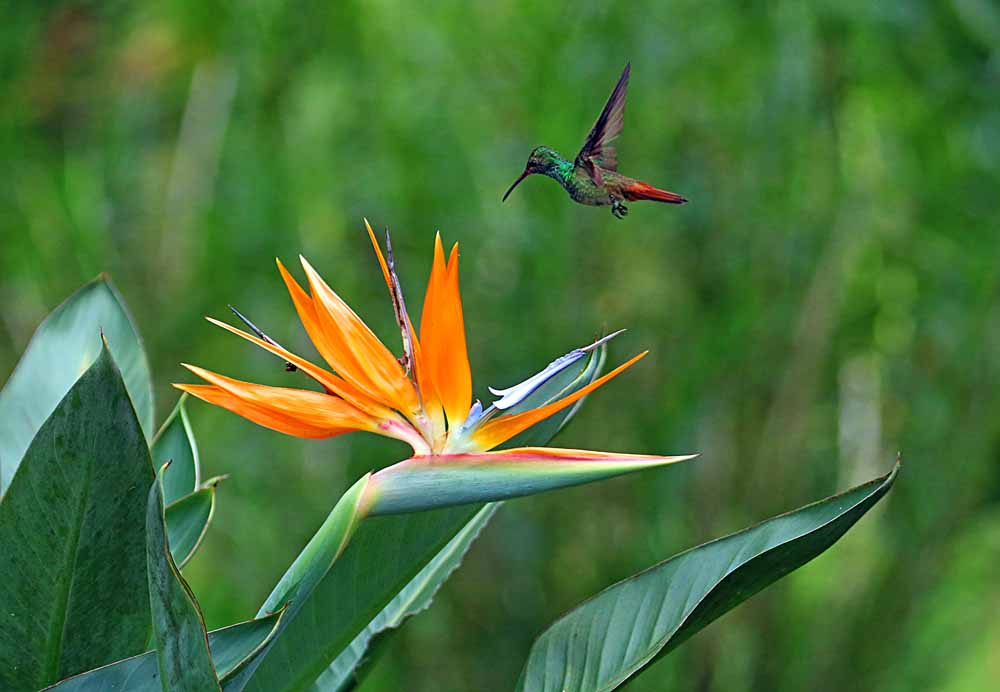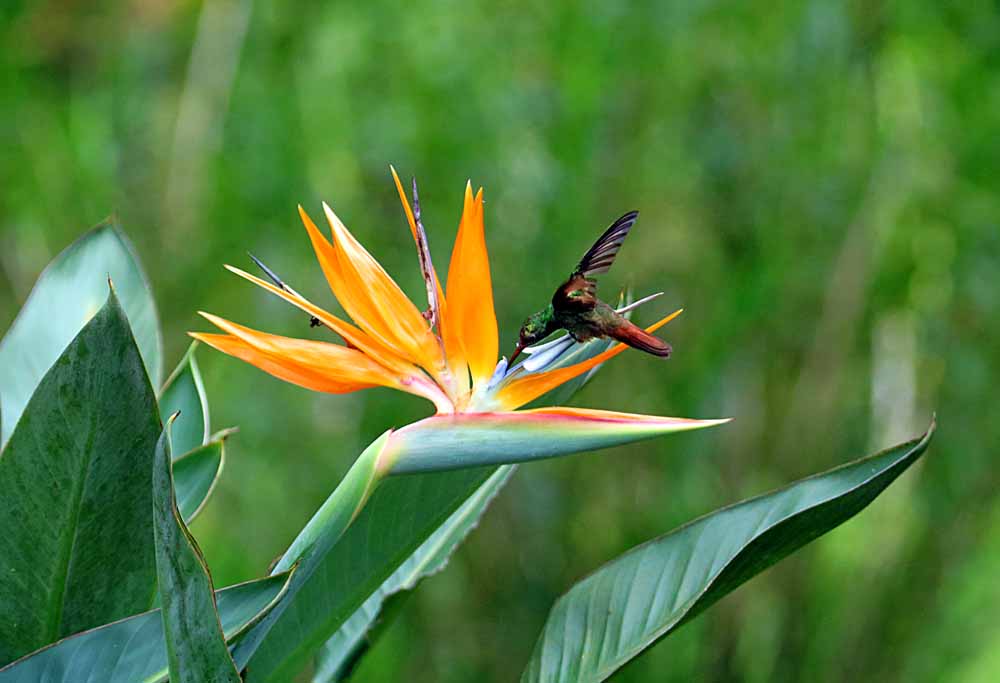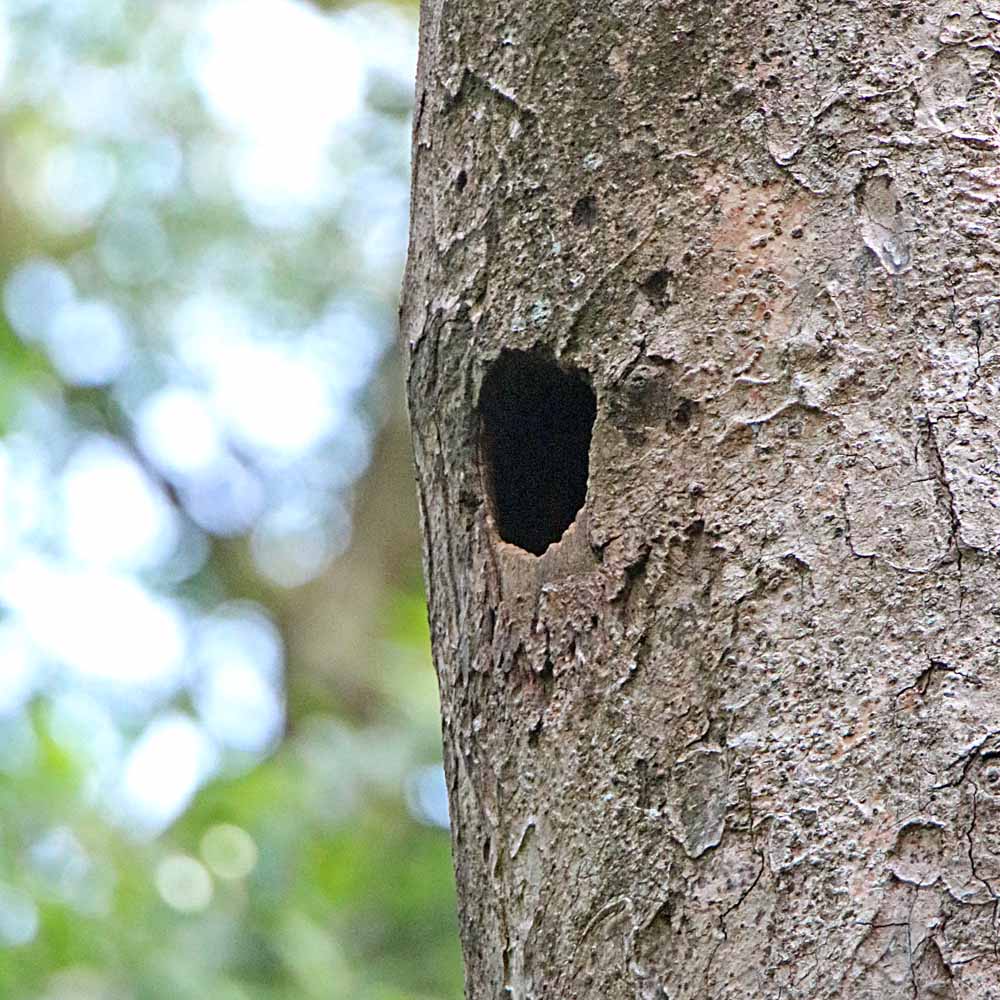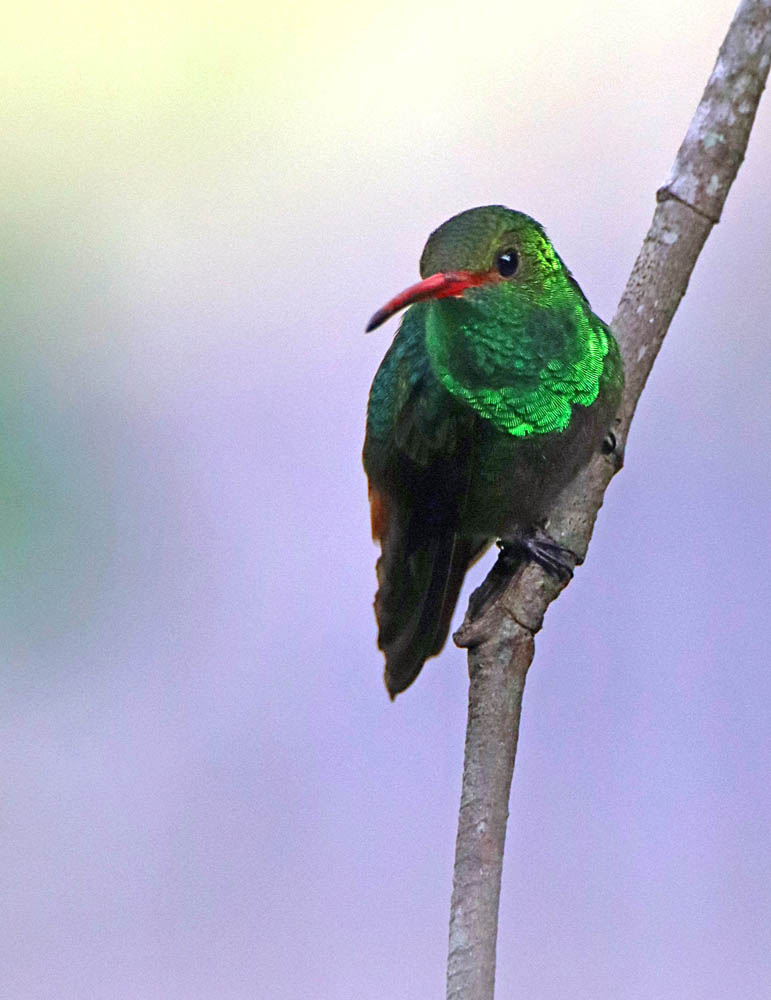The wind has been very heavy again for many days which discourages birds or butterflies on my hillside, but the Rufous-tailed Hummingbird is always here! And they chase off any other species of hummingbirds, but don’t seem to be bothered by the few butterflies I’ve had (maybe thinking they don’t eat much?). 🙂 I had to photograph those two flying pix from a greater distance +the movement and thus not good images, but I still like the action shots as well as the “sitting portraits” like this one . . .
